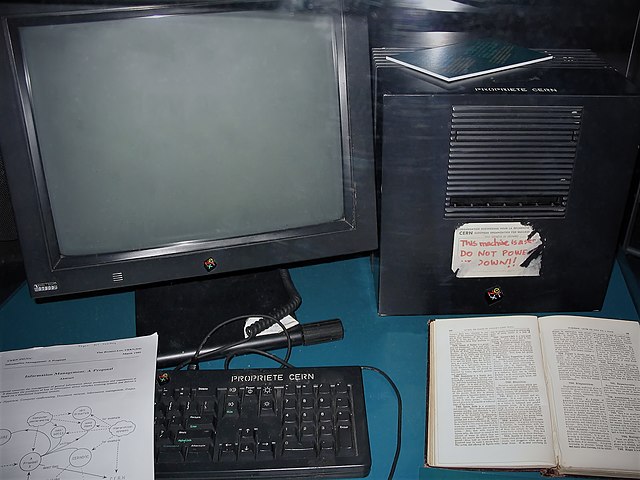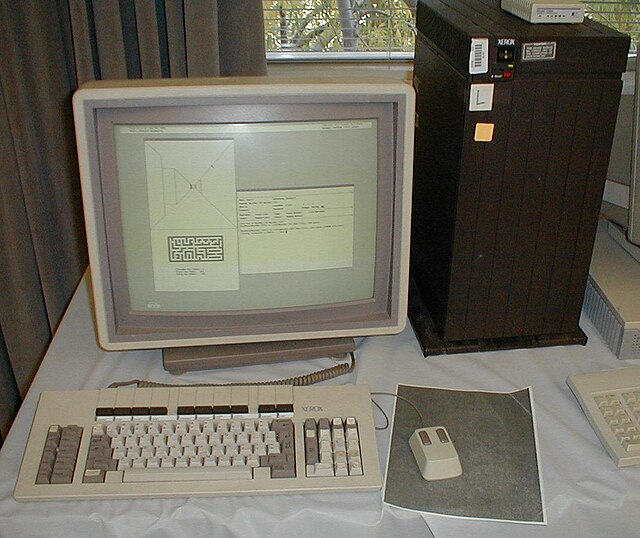NeXT, Inc. was an American technology company headquartered in Redwood City, California that specialized in computer workstations for higher education and business markets, and later developed web software. It was founded in 1985 by CEO Steve Jobs, the Apple Computer co-founder who had been forcibly removed from Apple that year. NeXT debuted with the NeXT Computer in 1988, and released the NeXTcube and smaller NeXTstation in 1990. The series had relatively limited sales, with only about 50,000 total units shipped. Nevertheless, the object-oriented programming and graphical user interface were highly influential trendsetters of computer innovation.
Redwood City headquarters at 900 Chesapeake Drive, July 2022
Steve Jobs, here pictured in 1984, founded NeXT in 1985.
This NeXT Computer was used by computer scientist Sir Tim Berners-Lee at the European Organization for Nuclear Research (CERN) to create the world's first web server and web browser, which is also a web page editor.
A NeXTcube has a NeXT monitor.
A workstation is a special computer designed for technical or scientific applications. Intended primarily to be used by a single user, they are commonly connected to a local area network and run multi-user operating systems. The term workstation has been used loosely to refer to everything from a mainframe computer terminal to a PC connected to a network, but the most common form refers to the class of hardware offered by several current and defunct companies such as Sun Microsystems, Silicon Graphics, Apollo Computer, DEC, HP, NeXT, and IBM which powered the 3D computer graphics revolution of the late 1990s.
Tim Berners-Lee created the World Wide Web at CERN in Switzerland on the NeXTcube workstation.
Early Xerox workstation
HP 9000 model 425 workstation running HP-UX 9 and Visual User Environment (VUE)
HP 9000 model 735 running HP-UX and the Common Desktop Environment (CDE)








